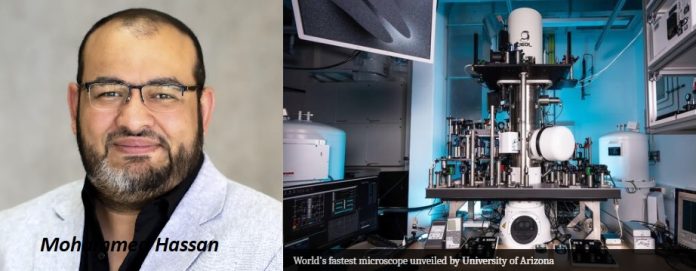Arizona: In a groundbreaking achievement, researchers at the University of Arizona have developed the world’s fastest electron microscope, capable of capturing events that occur within an attosecond – an almost incomprehensible unit of time equal to one quintillionth of a second. This breakthrough could revolutionize multiple fields of science, from quantum physics to material science and medicine.
At the forefront of this innovation is Associate Professor Mohammed Hassan, whose contributions push the boundaries of what is visible and knowable. Traditional electron microscopes, despite their precision, have struggled with capturing changes at the speed of electron motion. Hassan’s team has overcome this limitation by developing a technique that combines ultraviolet light pulses with a split laser beam. This allows the microscope to generate a single attosecond electron pulse, effectively freezing time at the scale of electron movement. The result is an unprecedented ability to observe atomic and subatomic processes as they happen.
The implications of this breakthrough are profound. Scientists will now be able to study chemical reactions, quantum mechanics, and atomic interactions in real-time, potentially leading to advancements in medicine, nanotechnology, and even artificial intelligence. Hassan’s work follows in the footsteps of the 2023 Nobel Prize winners in physics, whose research laid the foundation for attosecond pulse technology.
As the world enters a new era of scientific exploration, it is fitting that a Muslim scientist stands at the frontier of this revolutionary advancement.




